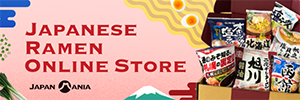- Areas in Miyagi
- Sendai area
- Ishinomaki / Kesennuma
- Shiraishi
- Naruko / Osaki
- Cities in Miyagi
- Sendai-shi
- Kesennuma-shi
- Kakuda-shi
- Tome-shi
- Osaki-shi
- Areas in Yamagata
- Yamagata city center
- Zao Onsen
- Mogami River
- Sakata / Tsuruoka
- Cities in Yamagata
- Sakata-shi
- Obanazawa-shi
- Mogami-gun
- Akumi-gun
- Areas in Fukushima
- Fukushima / Nihonmatsu
- Aizuwakamatsu / Kitakata
- Otauchijuku / Tadami
- Koriyama
- Inawashiro / Bandai
- Cities in Fukushima
- Fukushima-shi
- Aizuwakamatsu-shi
- Yama-gun
- Tamura-gun
- Cities in Gumma
- Isesaki-shi
- Midori-shi
- Tone-gun
- Areas in Chiba
- Choshi / Kujukuri
- Boso Peninsula
- Cities in Chiba
- Choshi-shi
- Katori-shi
- Katori-gun
- Isumi-gun
- Areas in Kanagawa
- Yokohama
- Kamakura / Enoshima
- Hakone / Odawara
- Shonan
- Sagamihara
- Cities in Kanagawa
- Kamakura-shi
- Fujisawa-shi
- Ashigarashimo-gun
- Aiko-gun
- Areas in Niigata
- Niigata
- Uonuma
- Echigo Yuzawa
- Nagaoka
- Sado
- Senami / Sasagawa
- Areas in Toyama
- Toyama
- Tateyama Kurobe Alpine Route
- Gokayama
- Cities in Toyama
- Tonamishi
- Nanto-shi
- Nakaniikawa-gun
- Areas in Ishikawa
- Kanazawa
- Noto / Wajima
- Kaga
- Cities in Ishikawa
- Wajima-shi
- Cities in Fukui
- Fukui-shi
- Obama-shi
- Oono-shi
- Katsuyama-shi
- Yoshida-gun
- Mikata-gun
- Areas in Yamanashi
- Kofu / Shosen Valley
- Mt. Fuji
- The Five Lakes of Mt. Fuji
- Koshu / Isawa Onsen
- Cities in Yamanashi
- Fujiyoshida-shi
- Hokuto-shi
- Kai-shi
- Koshu-shi
- Kitatsuru-gun
- Areas in Gifu
- Gifu
- Ogaki / Yoro
- Hida-Takayama
- Gujo-Hachiman
- Gero Onsen
- Cities in Gifu
- Nakatsugawa-shi
- Ono-gun
- Cities in Shizuoka
- Mishima-shi
- Shimada-shi
- Kakegawa-shi
- Areas in Shiga
- Otsu
- Omihachiman
- Hikone
- Maibara
- Koka
- Areas in Hyogo
- Kobe
- Awaji Island
- Himeji
- Takeda Castle area
- Koshien / Takarazuka
- Cities in Hyogo
- Kobe-shi
- Himeji-shi
- Takarazuka-shi
- Shinoyama-shi
- Areas in Nara
- Yoshino / Dorogawa Onsen
- Cities in Nara
- Nara-shi
- Kashihara-shi
- Sakurai-shi
- Yoshino-gun
- Areas in Wakayama
- Wakayama city
- Kumano Kodo Pilgrimage Routes
- Nanki Shirahama / Tanabe
- Koyasan
- Katsuura / Kushimoto
- Cities in Wakayama
- Wakayama-shi
- Tanabe-shi
- Ito-gun
- Nishimuro-gun
- Higashimuro-gun
- Areas in Tottori
- Tottori
- Yonago / Daisen
- Cities in Tottori
- Sakaiminato-shi
- Saihaku-gun
- Areas in Shimane
- Matsue / Izumo
- Iwami Ginzan area
- Cities in Shimane
- Matsue-shi
- Izumo-shi
- Ota-shi
- Cities in Okayama
- Okayama-shi
- Kurashiki-shi
- Tsuyama-shi
- Takahashi-shi
- Setouchi-shi
- Areas in Hiroshima
- Hiroshima city
- Shimanami Kaido
- Fukuyama / Onomichi
- Takehara / Mihara
- Cities in Hiroshima
- Hiroshima-shi
- Onomichi-shi
- Fukuyama-shi
- Shobara-shi
- Yamagata-gun
- Jinseki-gun
- Areas in Yamaguchi
- Shimonoseki / Ube
- Hagi / Nagato
- Cities in Yamaguchi
- Shimonoseki-shi
- Hagi-shi
- Nagato-shi
- Mine-shi
- Areas in Kagawa
- Takamatsu
- Shodoshima / Naoshima
- Kotohira
- Areas in Ehime
- Matsuyama / Dogo Onsen
- Uwajima
- Imabari city
- Cities in Ehime
- Imabari-shi
- Iyo-shi
- Areas in Kochi
- Kochi
- Ashizuri / Shimanto
- Aki · Muroto
- Cities in Kochi
- Kochi-shi
- Muroto-shi
- Tosa-shi
- Shimanto-shi
- Aki-gun
- Areas in Fukuoka
- Hakata
- Dazaifu
- Munakata
- Chikugo (Yanagawa)
- Cities in Fukuoka
- Fukuoka-shi
- Yanagawa-shi
- Munakata-shi
- Dazaifu-shi
- Areas in Nagasaki
- Nagasaki city
- Huis Ten Bosch · Sasebo
- Hirado / Matsuura
- Cities in Oita
- Nakatsu-shi
- Hita-shi
- Usuki-shi
- Bungoono-shi
- Yufu-shi
- Areas in Miyazaki
- Miyazaki city
- Takachiho
- Udo Shrine / Nichinan
- Hyuga / Nobeoka
- Ebi no Kogen / Miyakonojo
- Cities in Miyazaki
- Kushima-shi
- Ebino-shi
